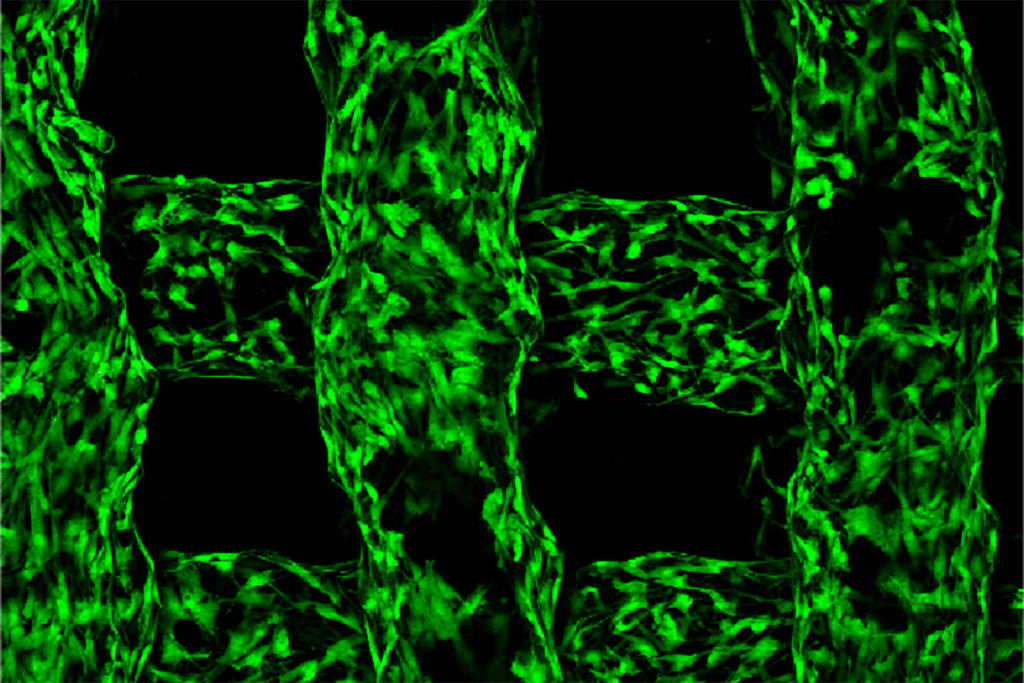McKelvey School of Engineering | February 13, 2025
Somtochukwu Okafor, McDonnell Scholar and biomedical engineering PhD student, in collaboration with Alexandra Rutz, assistant professor of biomedical engineering in the McKelvey School of Engineering, developed a technique to 3D print bioelectronic scaffolds that could help new tissue grow that could be used for drug development, environmental toxicity and other uses.
In addition to making gadgets and game pieces, 3D printing is being used in health care to print prosthetics, dental implants and surgical models. Now, a team at Washington University in St. Louis, is using 3D printing to create bioelectronic scaffolds that would allow researchers to create new tissue with a host of potential applications.
Okafor, a fifth-year doctoral student in biomedical engineering, said while their team isn’t the only one using this process, their work is unique. “Bioelectronics as a field isn’t new — think cochlear implants, pacemakers and smartwatches — but we are trying to interface with biology to make the technology more like systems that would occur in nature,” Okafor said. “We have borrowed approaches in 3D printing and tissue engineering and combined it with bioelectronics. All these processes have individual advantages that they bring to the table, and we are combining them into one.”
